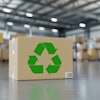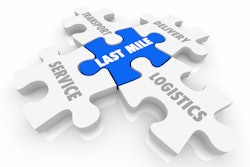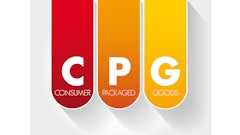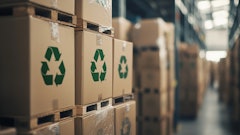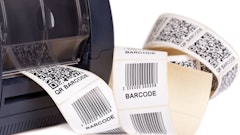
When we think of something as vast as the global supply chain, our brains go to its largest and most visible components. Enormous vessels and shipping containers. Cavernous, automated warehouses. Bustling ports.
Of course, those are obvious systems and machineries that make our supply chains function, and that command our attention when they are disrupted.
But like many complex integrations, supply chains are nothing more than the high-functioning sums of many parts. In fact, the risk of broken supply chains has been acknowledged since the 13th century; it is the source of the famous proverb that described how an entire kingdom was lost for the want of a single nail.
Here’s how reusable transport packaging (RTP) plays a role in building a circular economy.
Supply chain inefficiencies at the building block level
RTPs are the building blocks of supply chains; they include rolling carts and cages, pallets, crates and bins, even drums. RTPs are the componentry of our supply chains on the move – drilling down to their most essential and granular levels.
In total, RTPs represent a multi-billion-dollar global industry. Yet paradoxically, the ability to track and trace these items – both on-site and in-transit – has not been achievable in a remotely cost-effective manner.
You can ask. But there are no answers.
Essential questions about the presence of RTPs in the supply chain – like where are they at the moment? and where are they headed next? – are surprisingly unanswerable. These hidden inefficiencies, including time and money in the form of lost assets, is an incalculable drain on the global economy; conservatively it is the hundreds of billions. Because when items like rolling cages are lost in the supply chain web, the results are over-purchase and actual hoarding behavior.
For want of a rolling cage, the contract was lost. For want of a pallet, the client was lost. For want of a bin, the guidance was missed.
The problem goes beyond RTPs
This RTP crisis correlates with a larger reality: Most of today’s supply chains remain black boxes, providing little or no real-time tracking visibility. This technology gap, and that’s what it is, remains neither fully understood nor appreciated, despite the enormity of the stakes.
In the case of RTPs, the legacy technologies – barcodes, QR codes, RFID and GPS – all have the fundamental drawbacks of expensive infrastructure and extended time-to-deployment. This is why they are often used only sporadically, or in limited locations, which essentially defeats their purpose.
What’s more, the sustainability benefits of a smoothly functioning, self-aware supply chain will be of enormous planetary benefit. Without tracking, lost reusable assets become expensive single-use items, negating sustainability efforts.
An efficient future without the technologies of the past
The only solution for supply chains -- whose existing RTP fleets trigger massive tracking and management problems -- is an end-to-end, scalable, low-cost platform that brings AI together with the IoT.
What is demanded is a new platform model called Ambient IoT.
Everything everywhere all at once
Ambient IoT overcomes the limitations of both location and cost, delivering a return on investment in under a year for reusable assets like roll cages, bins, and pallets.
The breakthrough lies in ultra-thin Ambient IoT stickers, produced at scale in the trillions. These smart labels harvest energy wirelessly and connect to the cloud, delivering continuous intelligence on location, movement, temperature, and humidity.
Ambient IoT leverages the same Bluetooth network found in billions of everyday devices – smartphones, laptops, and home electronics – to bring real-time connectivity to RTPs.
And because the data is delivered in a modern, mobile-friendly way – through push notifications, real-time alerts, and intuitive dashboards – it’s instantly accessible to anyone, anywhere, right from their phone.
By bringing these previously offline assets online, Ambient IoT integrates them into digital ecosystems where they can be tracked, managed, and optimized with ease—shedding light on the operational blind spots that have long challenged businesses and burdened the planet.
Ambient IoT enables trillions of products to speak—and finally, be heard.
The benefits keep on rolling
The dramatic reduction of replacement costs for RTPs has such a compelling bottom-line impact that it is easy to overlook other contributions that Ambient IoT makes to everyday operations.
For example, expensive shrinkage is reduced through timely identification of what is called “temperature excursions.” At the same time, labor costs are reduced as there is far less time spent searching for lost assets. Ambient IoT reduces shrink caused by lost sales due to billing discrepancies.
Supply chains of the future will never miss the nail
RTPs are the leading edge, the proofs of concept, the thriving canaries in the cage who will demonstrate the power of Ambient IoT.
Those companies that invest in robust logistics, tracking technology, and integrated data analytics will gain competitive advantages.
Fixing the tiniest and most imperceptible nuances of supply chains may not be sexy.
But it is imperative and far-reaching.



